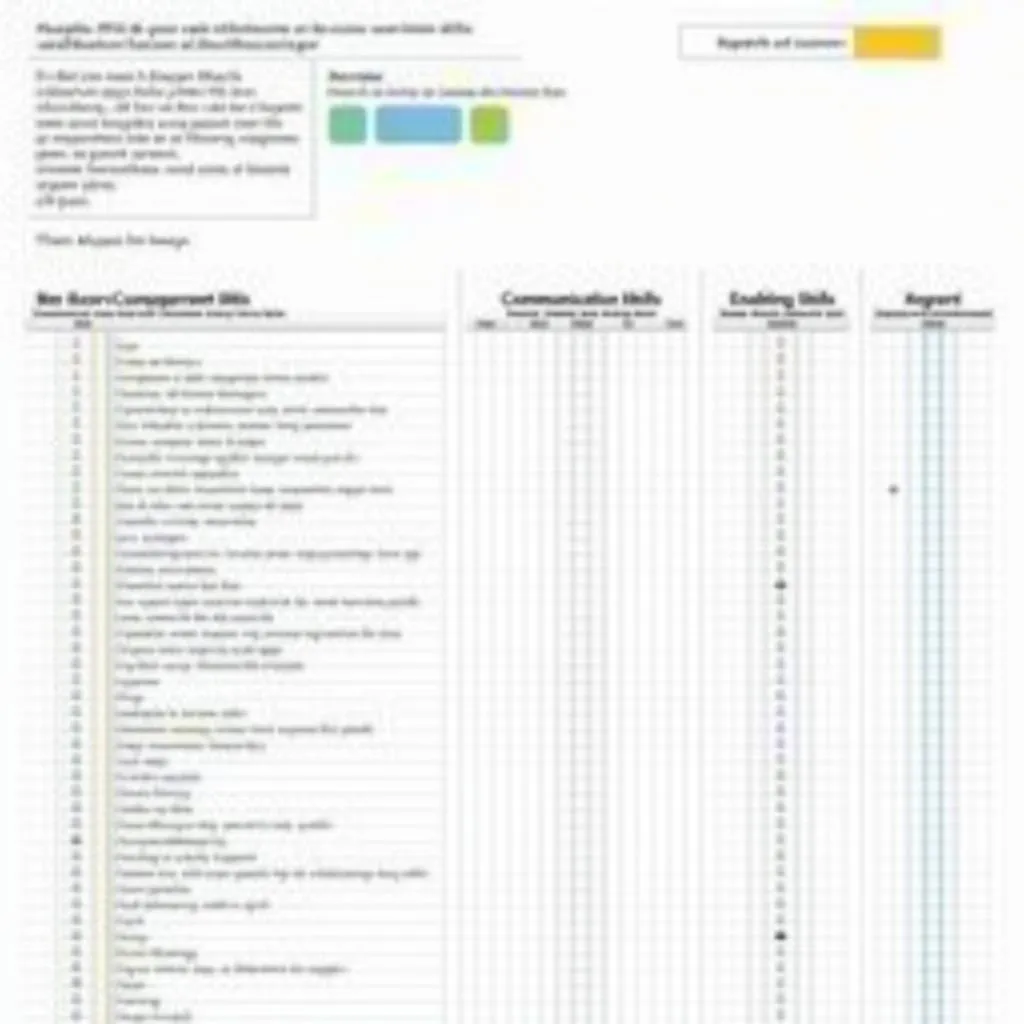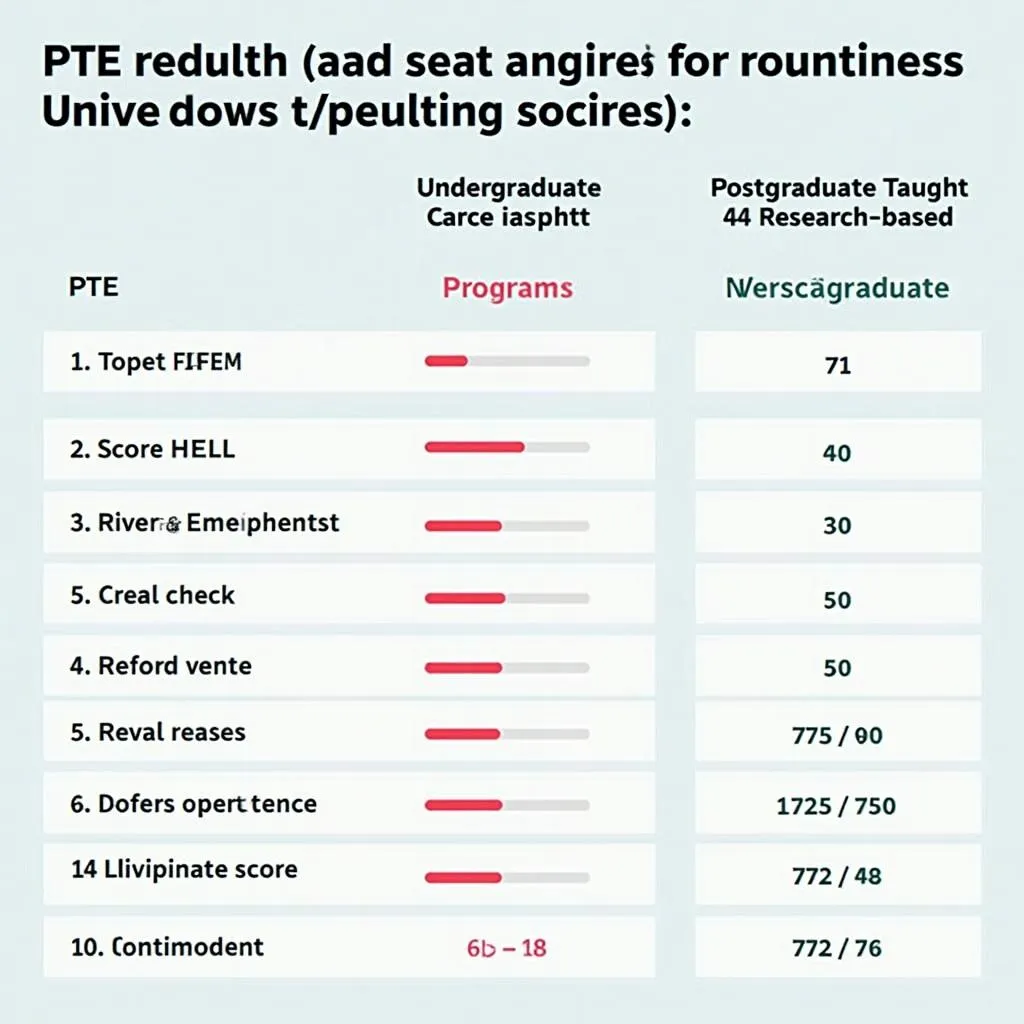Interpreting PTE scores for university applications can be a crucial step in your academic journey. As the PTE Academic test gains popularity among institutions worldwide, understanding how to read and analyze your scores is essential for a successful application process. This guide will walk you through the key aspects of interpreting PTE scores and how they relate to university requirements.
Understanding PTE Score Reports
When you receive your PTE score report, you’ll see several components that universities consider in their admissions process. Let’s break down these elements:
Overall Score
The overall score is a reflection of your general English language proficiency. It ranges from 10 to 90 points and is often the first number universities look at when assessing your language skills.
Communicative Skills Scores
PTE Academic evaluates four communicative skills:
- Listening
- Reading
- Speaking
- Writing
Each of these skills is scored on the same 10-90 scale as the overall score. Universities may have specific requirements for individual skill scores, so it’s crucial to pay attention to these.
 PTE Score Report Breakdown
PTE Score Report Breakdown
Enabling Skills Scores
In addition to communicative skills, PTE Academic also assesses six enabling skills:
- Grammar
- Oral Fluency
- Pronunciation
- Spelling
- Vocabulary
- Written Discourse
These scores provide a more detailed picture of your language abilities and are scored on the same 10-90 scale.
Comparing PTE Scores to Other English Tests
Many students wonder how their PTE scores compare to other English proficiency tests like IELTS or TOEFL. While there’s no exact conversion, several comparison charts are available to give you a general idea.
For instance, a PTE score of 58 is often considered equivalent to an IELTS score of 6.5. However, it’s important to note that universities may have their own interpretation of score equivalencies.
How Universities Use PTE Scores
Universities typically use PTE scores in two main ways:
- As a minimum entry requirement
- As part of a holistic application review
Dr. Sarah Thompson, an admissions expert at a leading UK university, explains:
“We look at PTE scores not just as a threshold to meet, but as an indicator of a student’s ability to cope with the linguistic demands of their chosen program. A strong score can sometimes compensate for weaknesses in other parts of the application.”
Interpreting Your Scores for Different Programs
Different academic programs may have varying English language requirements. For example:
- Undergraduate programs often require an overall score of 50-60
- Postgraduate taught programs might ask for scores of 60-70
- Research-based programs or those in fields like law or medicine may demand higher scores, sometimes 75+
It’s crucial to check the specific requirements for your chosen program and university.
 PTE Score Requirements Comparison
PTE Score Requirements Comparison
Tips for Meeting University PTE Requirements
- Start early: Give yourself plenty of time to prepare and retake the test if necessary.
- Focus on weak areas: Use your score report to identify and improve your weakest skills.
- Practice with authentic materials: Utilize official PTE practice resources to familiarize yourself with the test format.
- Consider the specific program requirements: Tailor your preparation to meet the needs of your chosen course of study.
- Aim higher than the minimum: Scoring above the minimum requirement can strengthen your application.
What to Do If Your Scores Don’t Meet Requirements
If your PTE scores fall short of university requirements, don’t panic. Here are some options:
- Retake the test: PTE allows you to retake the test after a 5-day waiting period.
- Look for alternative pathways: Some universities offer pre-sessional English courses or conditional admissions.
- Consider different programs or universities: You might find institutions with more flexible language requirements.
Professor John Davis, a language acquisition specialist, advises:
“Remember, language proficiency is just one aspect of your application. If your scores are close to the requirement, reach out to the admissions office. They may consider your overall academic profile and make exceptions in some cases.”
Conclusion
Interpreting PTE scores for university applications requires understanding both the score components and how universities use them in their admissions process. By familiarizing yourself with the scoring system and researching specific program requirements, you can effectively use your PTE scores to support your academic goals. Remember to view your scores in the context of your entire application, and don’t hesitate to seek guidance from admissions offices if you have questions about how to interpret PTE scores for your specific situation.
PTE academic score requirements for universities can vary widely, so it’s essential to research thoroughly and prepare accordingly. With the right approach and understanding, you can use your PTE scores as a powerful tool in your university application journey.
FAQs
-
How long are PTE scores valid for university applications?
PTE scores are typically valid for two years from the test date. However, some universities may have their own policies, so it’s best to check with each institution. -
Can I submit my PTE scores to multiple universities?
Yes, you can send your PTE scores to as many institutions as you like at no additional cost. -
What if my overall score meets the requirement but one skill score doesn’t?
This depends on the university’s policy. Some may consider your application if the overall score is strong, while others strictly require all minimum scores to be met. -
How quickly can I get my PTE scores after taking the test?
PTE Academic typically provides results within five business days, which is faster than many other English proficiency tests. -
Is there a way to predict my PTE score before taking the official test?
While there’s no guaranteed way to predict your score, taking official PTE practice tests can give you a good indication of your potential performance.